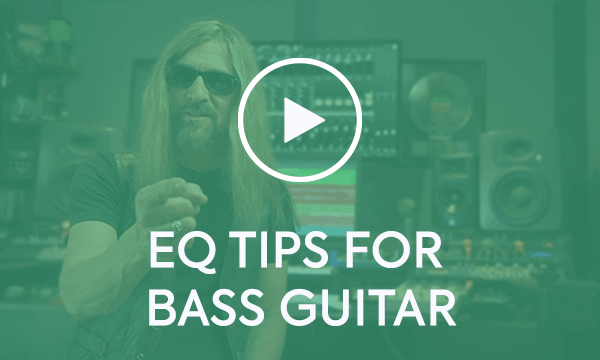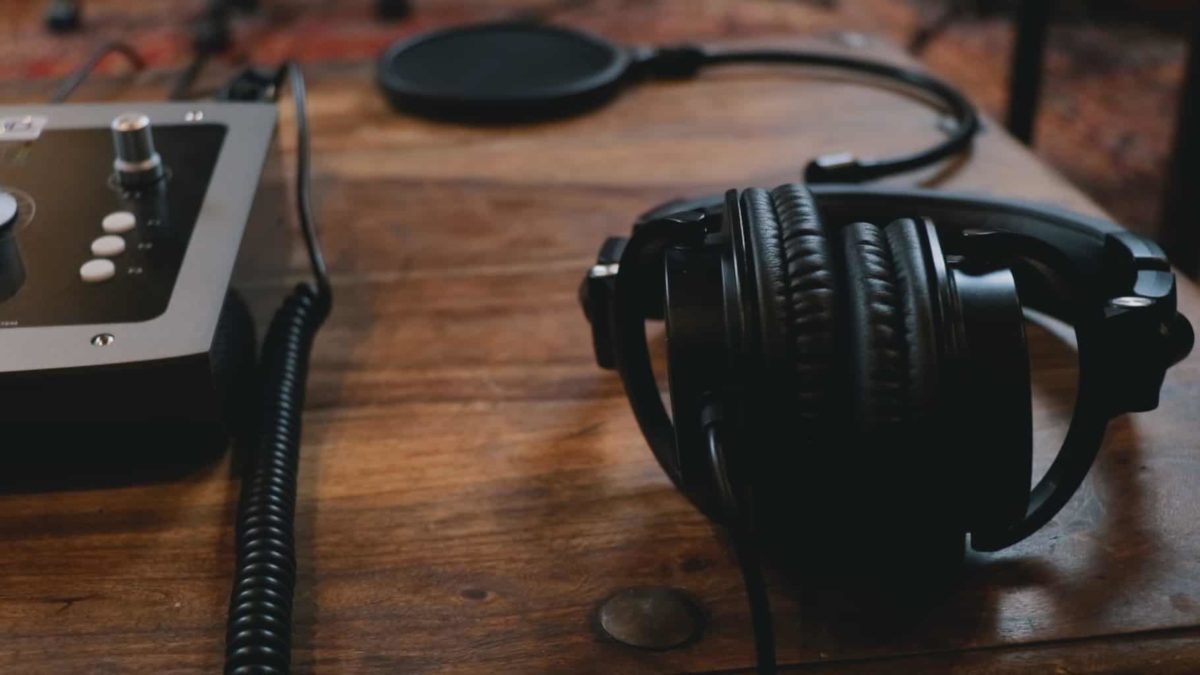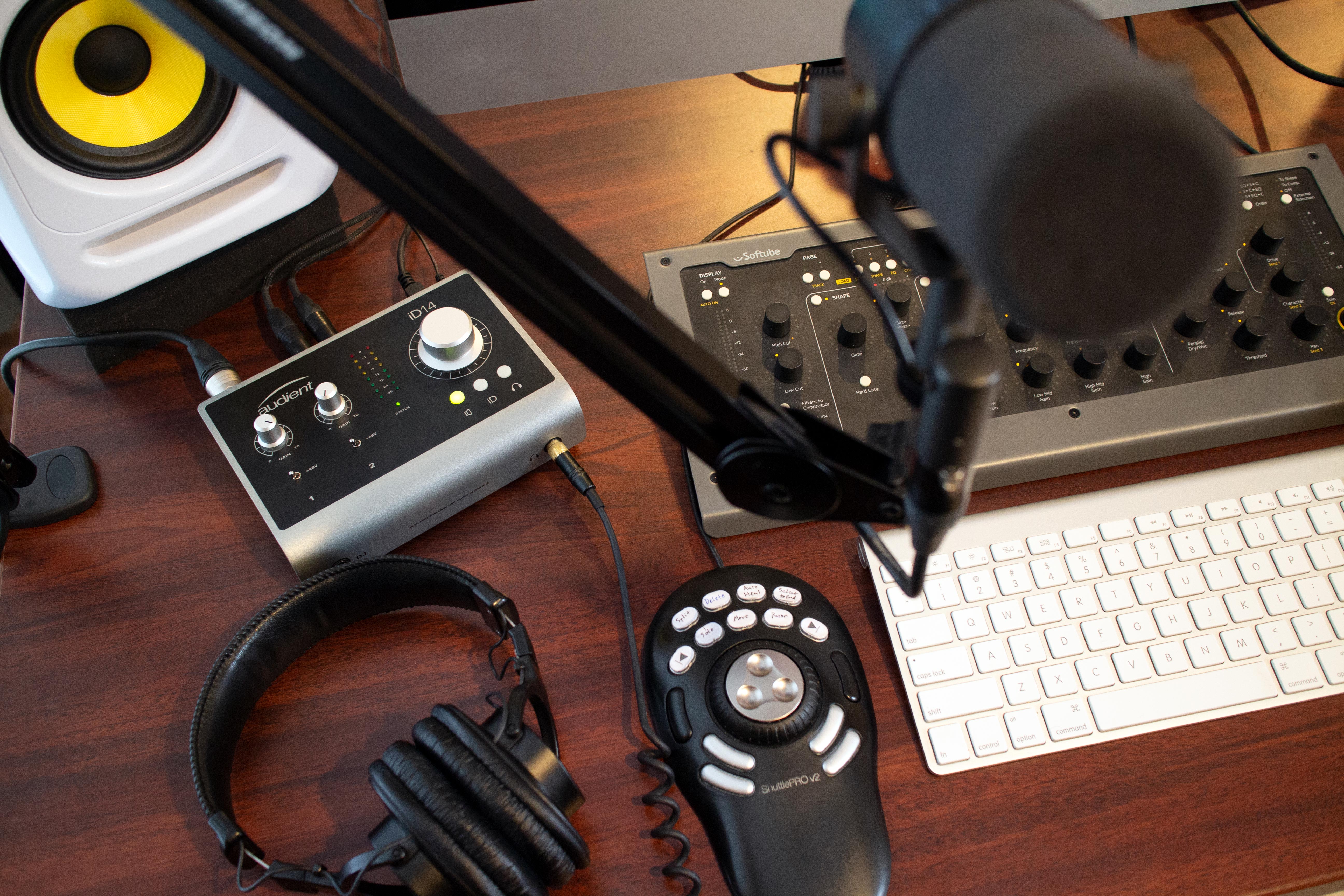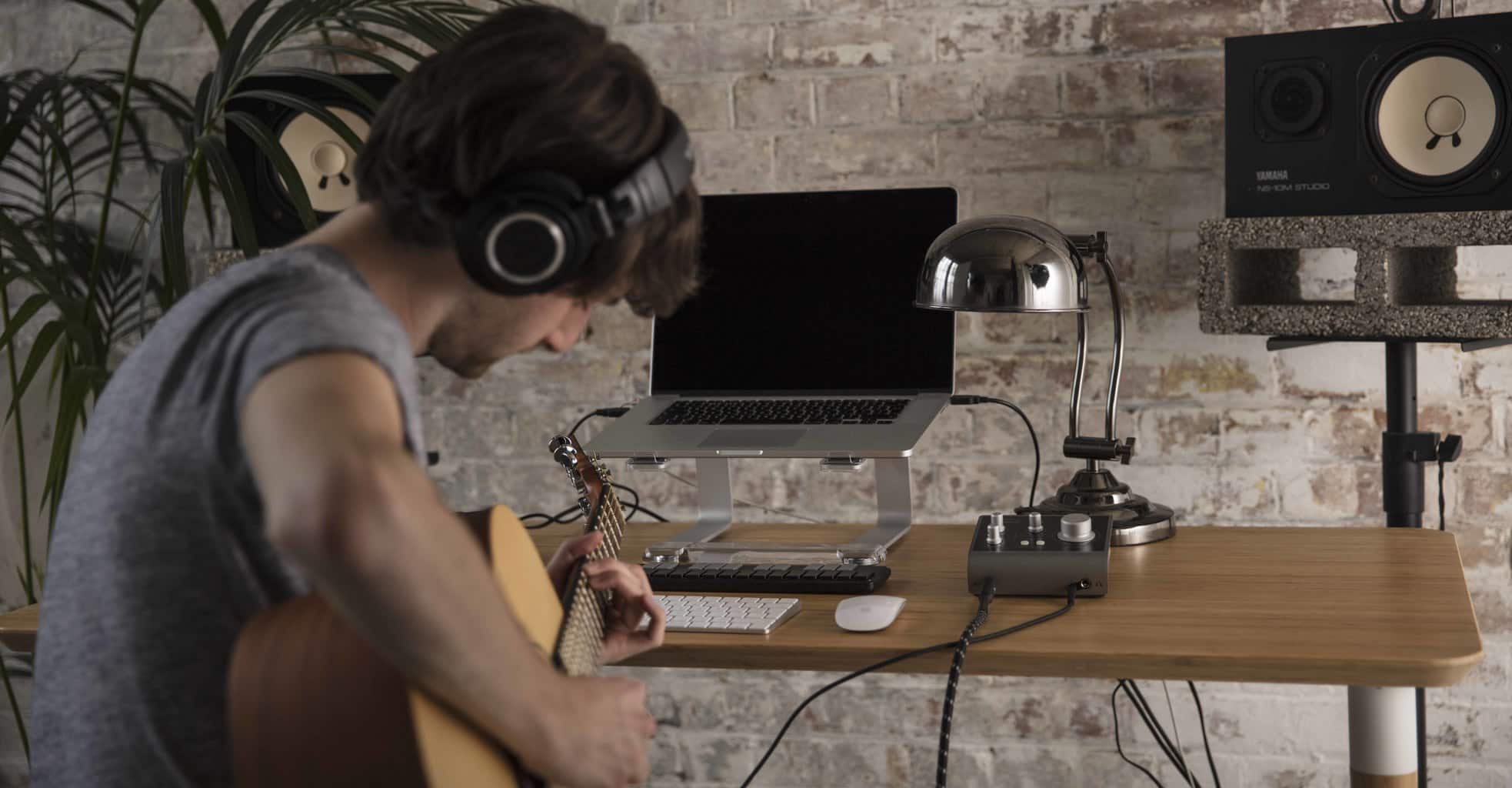If you’re new to music production, the concept of gain staging can be tricky to wrap your head around, but it’s a crucial engineering technicality that needs to be fully understood if you hope to get your mixes sounding their best, whether you’re recording real instruments and vocals or making tracks entirely in the box using virtual synths and samples.
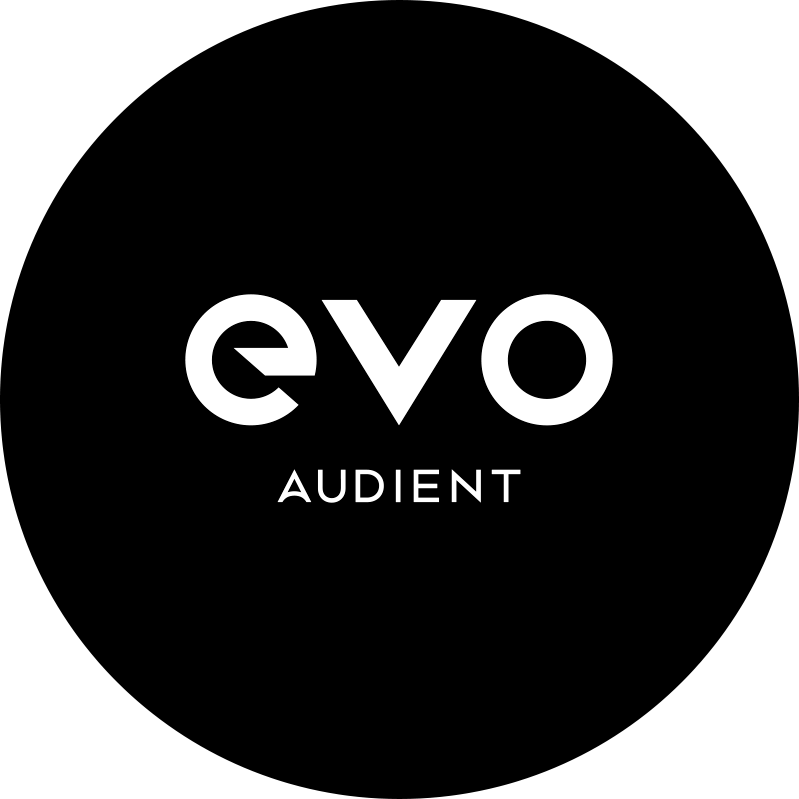
Written by EVO
In the simplest terms, then, gain staging is the setting of amplifier levels throughout all the devices in a serial signal path – preamps and effects, essentially – in order to present as loud a signal as possible at each input without clipping it or raising the noise floor any more than absolutely necessary.

Proper gain staging minimises noise
Background noise (tape hiss, amplifier hum, etc) is less of an issue in the studio these days than it once was, thanks to the significant reduction in analogue hardware involved brought about by the advent of the software DAW and its attendant plugin effects – not to mention the exceptionally high quality of the modern analogue components that are present, such as the super clean preamps in your EVO audio interface. This had made achieving a healthy signal-to-noise ratio much easier than it used to be, as plugins themselves don’t introduce noise unless they’re deliberately designed to. Nonetheless, if you don’t carefully set up your gain staging at both the recording and mixing stages, of course, you still run the risk of incrementally boosting any inherent noise captured in the source recordings as you pile on the plugins.
Proper gain staging avoids clipping
Clipping describes the overdriving of an audio signal into and beyond the point of distortion. While clipping in an analogue amplifier can actually be a desirable effect, adding character-enhancing grit and warmth to the sound, in the digital domain, it’s usually a no-no. Exceed 0dBFS when recording via the analogue-to-digital converters of your audio interface, or at your DAW’s master output (which we’ll come back to), and you’ll get wholly unpleasant digital distortion. And even with analogue clipping, let too much of it build up through multiple stages in your signal path through poor gain staging (mic preamp to analogue compressor to mixer input, for example) and the end result can get messy.
So, the idea is to record the signal going into your DAW via your audio interface hot enough to minimise noise, while leaving enough headroom to also avoid the potential for clipping, should the singer or player get a bit carried away during the take. Ultimately, what this all boils down to is a recommendation to aim for an average input volume level of around -18dBFS. This, it’s widely agreed, provides the best balance of headroom and SNR, as well as ‘playing nice’ with analogue hardware. (In fact, most high-quality analogue emulation plugins are made to work with this signal level, too.) Your DAW’s standard peak metering won’t be much use for this, so get hold of a VU meter plugin (there are quite a few out there, some of them free) and calibrate it so that -18dBFS equates to 0dBVU on the meter.

Smartgain: the EVO advantage
Although you can set the gain of each deployed preamp in your EVO audio interface manually if you want to (simply keep those meters hovering around the -18dBFS mark, as described), the innovative Smartgain system can take care of the process for you at the press of a button. Using an intelligent auto-levelling algorithm, Smartgain automatically adjusts the input level from your connected instrument or microphone – or both at the same time – to get the optimum signal into your DAW, and it couldn’t be easier to use.
1. Press the Smartgain button on the face of your EVO interface. The Input buttons will light up.
2. Press the Input buttons for the inputs you want to automatically set the gains of, then press the Smartgain button again. The Input buttons will flash red, indicating that Smartgain is waiting for an audio signal to analyse.
With the EVO16, Smartgain can be immediately activated for all eight input channels at once by holding the Smartgain button down briefly – a huge time saver for recording drum kits and other complex setups.
3. Play your instrument and/or sing into your mic at the loudest volume level you intend to reach when it comes to the actual performance. When the Smartgain button flashes green, the preamp gains will have been set so that the input level peaks at -12dBFS, which aligns well with the -18dBFS average target.
And that’s all there is to it! Now you can hit the record button in your DAW and do your thing, safe in the knowledge that your EVO interface is configured to capture the best signal possible from your mic, guitar, synth or other instrument. Smartgain is a godsend when it comes to effective gain staging, taking care of what can otherwise be quite a tedious part of the recording process, and leaving you free to concentrate on what matters most: making great music.

Gain staging in the DAW
Once the recording is done, or if you’re only dealing with existing audio tracks and virtual instruments within your DAW, gain staging becomes rather more straightforward. Operating at 32- or 64-bit, the mixer in any DAW is capable of handling a near-infinite dynamic range internally, so the only point at which clipping can become a problem is at the master output, where the signal hits the digital-to-analogue converters in your audio interface. Here, the volume level must never exceed 0dBFS or your final exported 16- or 24-bit master audio file will be audibly clipped.
To ensure that that doesn’t happen, and that you’re getting the most out of every signal in the mix, you just need to keep that -18dBFS average target in mind at the output of every plugin on every channel and bus, adjust track volumes using the channel faders in the mixer so as to not mess with your gain staging, and keep the master output level peaking at around -6dB. Bear in mind, though, that -18dBFS should be seen as a starting point, rather than entirely prescriptive – if you feel the urge to overdrive that tape emulation plugin or compressor for creative purposes, don’t be shy about going for it!
Related Articles
If you’re new to music production, the concept of gain staging can be tricky to wrap your head around, but it’s a crucial engineering technicality that needs to be fully understood if you hope to get your mixes sounding their best, whether you’re recording real instruments and vocals or making tracks entirely in the box using virtual synths and samples.

Written by EVO
In the simplest terms, then, gain staging is the setting of amplifier levels throughout all the devices in a serial signal path – preamps and effects, essentially – in order to present as loud a signal as possible at each input without clipping it or raising the noise floor any more than absolutely necessary.

Proper gain staging minimises noise
Background noise (tape hiss, amplifier hum, etc) is less of an issue in the studio these days than it once was, thanks to the significant reduction in analogue hardware involved brought about by the advent of the software DAW and its attendant plugin effects – not to mention the exceptionally high quality of the modern analogue components that are present, such as the super clean preamps in your EVO audio interface. This had made achieving a healthy signal-to-noise ratio much easier than it used to be, as plugins themselves don’t introduce noise unless they’re deliberately designed to. Nonetheless, if you don’t carefully set up your gain staging at both the recording and mixing stages, of course, you still run the risk of incrementally boosting any inherent noise captured in the source recordings as you pile on the plugins.
Proper gain staging avoids clipping
Clipping describes the overdriving of an audio signal into and beyond the point of distortion. While clipping in an analogue amplifier can actually be a desirable effect, adding character-enhancing grit and warmth to the sound, in the digital domain, it’s usually a no-no. Exceed 0dBFS when recording via the analogue-to-digital converters of your audio interface, or at your DAW’s master output (which we’ll come back to), and you’ll get wholly unpleasant digital distortion. And even with analogue clipping, let too much of it build up through multiple stages in your signal path through poor gain staging (mic preamp to analogue compressor to mixer input, for example) and the end result can get messy.
So, the idea is to record the signal going into your DAW via your audio interface hot enough to minimise noise, while leaving enough headroom to also avoid the potential for clipping, should the singer or player get a bit carried away during the take. Ultimately, what this all boils down to is a recommendation to aim for an average input volume level of around -18dBFS. This, it’s widely agreed, provides the best balance of headroom and SNR, as well as ‘playing nice’ with analogue hardware. (In fact, most high-quality analogue emulation plugins are made to work with this signal level, too.) Your DAW’s standard peak metering won’t be much use for this, so get hold of a VU meter plugin (there are quite a few out there, some of them free) and calibrate it so that -18dBFS equates to 0dBVU on the meter.

Smartgain: the EVO advantage
Although you can set the gain of each deployed preamp in your EVO audio interface manually if you want to (simply keep those meters hovering around the -18dBFS mark, as described), the innovative Smartgain system can take care of the process for you at the press of a button. Using an intelligent auto-levelling algorithm, Smartgain automatically adjusts the input level from your connected instrument or microphone – or both at the same time – to get the optimum signal into your DAW, and it couldn’t be easier to use.
1. Press the Smartgain button on the face of your EVO interface. The Input buttons will light up.
2. Press the Input buttons for the inputs you want to automatically set the gains of, then press the Smartgain button again. The Input buttons will flash red, indicating that Smartgain is waiting for an audio signal to analyse.
With the EVO16, Smartgain can be immediately activated for all eight input channels at once by holding the Smartgain button down briefly – a huge time saver for recording drum kits and other complex setups.
3. Play your instrument and/or sing into your mic at the loudest volume level you intend to reach when it comes to the actual performance. When the Smartgain button flashes green, the preamp gains will have been set so that the input level peaks at -12dBFS, which aligns well with the -18dBFS average target.
And that’s all there is to it! Now you can hit the record button in your DAW and do your thing, safe in the knowledge that your EVO interface is configured to capture the best signal possible from your mic, guitar, synth or other instrument. Smartgain is a godsend when it comes to effective gain staging, taking care of what can otherwise be quite a tedious part of the recording process, and leaving you free to concentrate on what matters most: making great music.

Gain staging in the DAW
Once the recording is done, or if you’re only dealing with existing audio tracks and virtual instruments within your DAW, gain staging becomes rather more straightforward. Operating at 32- or 64-bit, the mixer in any DAW is capable of handling a near-infinite dynamic range internally, so the only point at which clipping can become a problem is at the master output, where the signal hits the digital-to-analogue converters in your audio interface. Here, the volume level must never exceed 0dBFS or your final exported 16- or 24-bit master audio file will be audibly clipped.
To ensure that that doesn’t happen, and that you’re getting the most out of every signal in the mix, you just need to keep that -18dBFS average target in mind at the output of every plugin on every channel and bus, adjust track volumes using the channel faders in the mixer so as to not mess with your gain staging, and keep the master output level peaking at around -6dB. Bear in mind, though, that -18dBFS should be seen as a starting point, rather than entirely prescriptive – if you feel the urge to overdrive that tape emulation plugin or compressor for creative purposes, don’t be shy about going for it!

